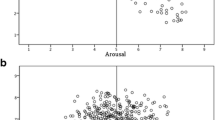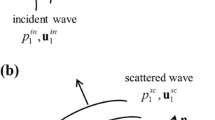Abstract
With the maturation of computer-aided technology, many famous acoustic simulation software have appeared around the world. Researchers can use the software to evaluate the sound quality of the performance spaces. However, most popular software require high levels of professionalism for operators, and 3D model visualization is not intuitive enough. Aiming at these problems, this paper designs and implements an acoustic simulation system for performance space based on Unity 3D and C++. According to the system’s functional design, it can be divided into two modules: the model configuration module and the acoustical parameter prediction module. We develop various modeling tools in the model configuration module and use modified image source method to simulate room impulse response in the acoustical parameter prediction module. Then, acoustical parameters such as reverberation time, clarity, definition, and speech transmission index are computed. We take Hengdian theater as an example of experimental test, and compare the results with EASE simulation results and measurements. The system test shows that the acoustic simulation system has better visualization and is easier to operate. And in this case, the absolute errors of the simulation values of each acoustical parameter are almost closer to the measurements than those of EASE, which proves that the simulation values of the system in this paper are more accurate to a certain extent.

















Similar content being viewed by others
Availability of data and materials
The datasets generated and analysed during the current study are available from the corresponding author on reasonable request.
References
Allen JB, Berkley DA (1979) Image method for efficiently simulating small-room acoustics. J Acoust Soc Am 65(4):943–950
Atalla N, Sgard F (2015) Finite element and boundary methods in structural acoustics and vibration. CRC Press
Balderrama A, Arztmann D, Schulz JU (2021) Review of commercial software tools for facade acoustics. ce/papers 4(6):465–472
Bilbao S, Ahrens J, Hamilton B (2019) Incorporating source directivity in wave-based virtual acoustics: Time-domain models and fitting to measured data. J Acoust Soc Am 146(4):2692–2703
Canclini A, Antonacci F, Thomas MR, et al (2011) Exact localization of acoustic reflectors from quadratic constraints. In: 2011 IEEE Workshop on Applications of Signal Processing to Audio and Acoustics (WASPAA), IEEE, pp 17–20
Cerdá S, Giménez A, Romero J et al (2009) Room acoustical parameters: A factor analysis approach. Appl Acoust 70(1):97–109
Cheng L, Wu W, Niu C et al (2020) Research on simulation system of environment sound field in conference venue based on computer acoustic simulation(in chinese). Audio Eng 44(10):1–5
Escobar VG, Morillas JB (2015) Analysis of intelligibility and reverberation time recommendations in educational rooms. Appl Acoust 96:1–10
Fu Zh, Jw Li (2016) Gpu-based image method for room impulse response calculation. Multimed Tools Appl 75(9):5205–5221
Hargreaves JA, Rendell LR, Lam YW (2019) A framework for auralization of boundary element method simulations including source and receiver directivity. J Acoust Soc Am 145(4):2625–2637
IEC (2020) IEC 60268–16 Sound System Equipment - Part 16: Objective rating of speech intelligibility by speech transmission index. BSI Standards Publication, Switzerland
ISO (2009) ISO 3382-1 Acoustics – Measurement of room acoustical parameters – Part 1: Performance spaces. The International Organization for Standardization, Switzerland
Kulowski A (1985) Algorithmic representation of the ray tracing technique. Appl Acoust 18(6):449–469
Lehmann EA, Johansson AM (2008) Prediction of energy decay in room impulse responses simulated with an image-source model. J Acoust Soc Am 124(1):269–277
Li Y, Meyer J, Lokki T et al (2022) Benchmarking of finite-difference time-domain method and fast multipole boundary element method for room acoustics. Appl Acoust 191:108662
Nowoświat A, Olechowska M (2022) Experimental validation of the model of reverberation time prediction in a room. Buildings 12(3):347
Nowoświat A, Olechowska M, Ślusarek J (2016) Prediction of reverberation time using the residual minimization method. Appl Acoust 106:42–50
Pilch A, Kamisiński T (2011) The effect of geometrical and material modification of sound diffusers on their acoustic parameters. Arch Acoust 36:955–966
Prędka E, Brański A (2020) Analysis of the room acoustic with impedance boundary conditions in the full range of acoustic frequencies. Arch Acoust p 85–92
Sakuma T, Sakamoto S, Otsuru T (2014) Computational simulation in architectural and environmental acoustics. Springer
Savioja L, Svensson UP (2015) Overview of geometrical room acoustic modeling techniques. J Acoust Soc Am 138(2):708–730
Thydal T, Pind F, Jeong CH et al (2021) Experimental validation and uncertainty quantification in wave-based computational room acoustics. Appl Acoust 178:107939
Visentin C, Prodi N, Valeau V, et al (2013) A numerical and experimental validation of the room acoustics diffusion theory inside long rooms. In: Proceedings of Meetings on Acoustics ICA2013, Acoustical Society of America, p 015024
Zhen S, Meiqing C (2019) Research on acoustic environment optimization design of ship multi-functionnal conference room. In: IOP Conference Series: Earth and Environmental Science, IOP Publishing, p 032047
Acknowledgements
This work was supported by the National Key R &D Program of China (grant number: 2018YFB1404101).
Author information
Authors and Affiliations
Corresponding author
Ethics declarations
Conflicts of interest
The authors declare that they have no conflict of interest.
Additional information
Publisher's Note
Springer Nature remains neutral with regard to jurisdictional claims in published maps and institutional affiliations.
Both authors are contributed equally to this work.
Rights and permissions
Springer Nature or its licensor (e.g. a society or other partner) holds exclusive rights to this article under a publishing agreement with the author(s) or other rightsholder(s); author self-archiving of the accepted manuscript version of this article is solely governed by the terms of such publishing agreement and applicable law.
About this article
Cite this article
Lv, C., Xue, M., Yan, M. et al. An ISM-based acoustic simulation system for performance space. Multimed Tools Appl 83, 31443–31463 (2024). https://doi.org/10.1007/s11042-023-16845-1
Received:
Revised:
Accepted:
Published:
Issue Date:
DOI: https://doi.org/10.1007/s11042-023-16845-1




